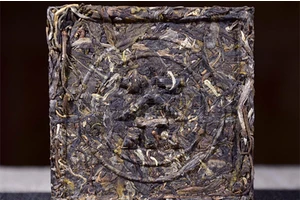kungfu tea is divided into three factions: Fujian, Chaoshan and Taiwan Province!
Fujian drinks more Tieguanyin, Chaoshan drinks more green tea, Chaoshan fried tea and single fir tea, while Taiwan Province drinks more cave top oolong. But in terms of brewing methods, the three are in common. It is not only an elegant thing to taste the third-class congou tea, but also a lot of attention. Kung fu tea has specific requirements on water quality, utensils and brewing methods. Tea can't be made without water, so let's start with water first. Lu Yu wrote in the Book of Tea: "Its water is used in mountains and rivers, rivers and wells." The tea artist said that the water content is Tianshui, underground water and spring water. Tianshui is of course the best, referring to snow water, dew and so on. In A Dream of Red Mansions, Cao Xueqin wrote that drinking tea with the snow collected on plum blossoms five years ago is the ultimate water for drinking tea, so drinking tea is not only about style, but also extremely luxurious. In the past, rich people used bamboo tubes and other utensils to collect them bit by bit before the first light came out in the morning. It is said that the water before the sun came out was negative and the tea was more fragrant. What a kung fu exam! Modern research says that the water in nature is only rain and snow water is pure soft water, and making tea with soft water can really make the soup clear in color and fragrant in taste.
Ground water refers to mountain spring water, which can be divided into soil, sandy and muddy according to different soil qualities. The tea artist said that sand is the best, and sand has the function of filtering, which makes sense. Nowadays, drinking tea in hotels and teahouses is of course impossible, as long as the water quality is clear and the taste is sweet. High-rush and low-pour "high-rush and low-pour" refers to the method of making and pouring tea. To make tea, you should rush into boiling water along the inner edge of the teapot mouth, and the water column should not rush in from the center of the teapot, because it will "break through the tea gall" and destroy the taste of tea. Making tea should be like calligraphy, it should be done in one go, and the distance between the kettle and the teapot should be relatively large, so it is called "high rush". It is said that "high impact" can make the heat directly penetrate the bottom of the tank and make the tea foam rise, which is not only beautiful, but also makes the tea taste more fragrant. When pouring tea, the teapot should be as close as possible to the teacup, so as to prevent the hot air from scattering, and the water may not be hot enough to make the tea fragrance evaporate prematurely. At the same time, low pouring will not stir up bubbles or make a ticking sound. To pour tea, the tea soup should be sprinkled into the cups in turn, and each cup should be filled gradually two or three times, which is called "Guan Gong's tour of the city", so that the tea soup in each cup can be evenly colored. The tea artist said, kung fu tea, the first bubble is the most important thing.
If the first bubble is not well brewed, the subsequent tea taste will have an impact. The first bubble is for washing tea. When it comes out, gently wipe the tea foam, pour out the tea and rinse the tea set. This process can also play a role in preheating tea sets. Tea-tasting etiquette The traditional Chaoshan congou tea generally has only three cups, no matter how many guests use only three cups. When drinking tea, put the three cups in a "pin" shape according to the guests' point of view. The first cup of tea must be given to the first guest on the left, regardless of their status, age or gender. Wash the cup with hot tea every time you finish a cup of tea, and then give the cup with heat to the next one. This custom is said to be a good virtue for people to show unity, friendship and mutual humility. To taste tea, you should smell the fragrance first, then look at the color of the tea soup, and finally taste it. A cup of tea should be just divided into three mouthfuls. The fragrance gradually spread from the tip of the tongue to the throat, and finally it was drunk, which can be described as dripping. These are the three realms of congou tea-"the fragrance overflows the teeth and cheeks, the sweetness moistens the throat, and the gods are dedicated".





